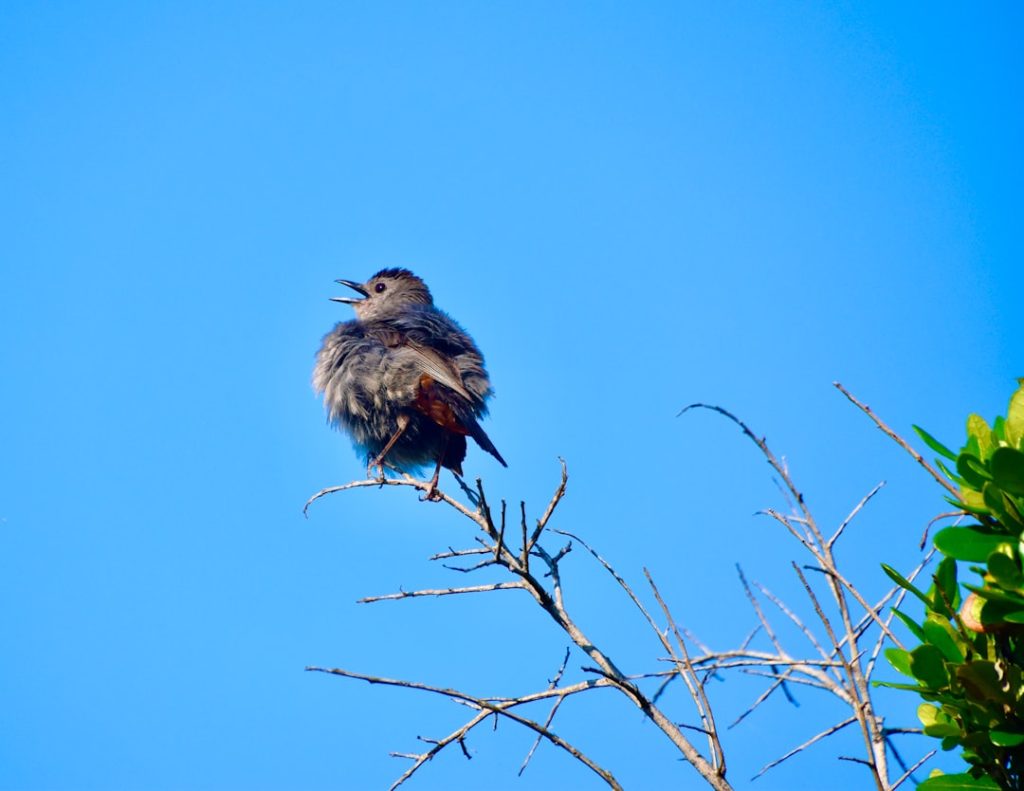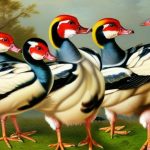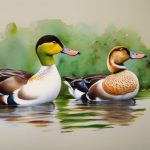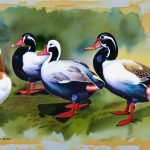Muscovy ducks are a unique breed of domestic duck that is known for its distinct appearance and gentle nature. They are a popular choice for backyard poultry enthusiasts and small-scale farmers due to their low maintenance and high productivity. Muscovy ducks are native to South America and are believed to have been domesticated by indigenous peoples in the region over 2,000 years ago. They are known for their large size, quiet demeanor, and ability to forage for food, making them an ideal choice for those looking to raise ducks for meat or eggs. In this article, we will explore the history and origin of Muscovy ducks, their physical characteristics, popular varieties, care and maintenance, breeding and reproduction, as well as their uses and benefits.
Table of Contents
Key Takeaways
- Muscovy ducks are a popular breed known for their unique appearance and quiet nature.
- Muscovy ducks have a long history, originating from South America and being domesticated by indigenous cultures.
- Muscovy ducks are known for their distinctive red facial caruncles and large size, with males being significantly larger than females.
- Popular varieties of Muscovy ducks include the white, black, and blue varieties, each with their own unique coloration.
- Muscovy ducks are relatively low-maintenance and can be raised for meat, eggs, pest control, and as pets.
History and Origin of Muscovy Ducks
The history of Muscovy ducks can be traced back to South America, where they were first domesticated by indigenous peoples in the region. They were brought to Europe by Spanish explorers in the 16th century and quickly gained popularity due to their unique appearance and gentle nature. The name “Muscovy” is believed to have originated from the mistaken belief that the ducks came from the region of Muscovy, which is now part of modern-day Russia. However, it is now widely accepted that Muscovy ducks are native to South America and were introduced to Europe by Spanish explorers. Over the centuries, Muscovy ducks have been selectively bred for various traits, leading to the development of different varieties with distinct physical characteristics and color patterns.
Characteristics and Physical Appearance of Muscovy Ducks
Muscovy ducks are known for their large size, with males typically weighing between 10-15 pounds and females weighing between 6-8 pounds. They have a distinctive appearance, with a red, warty caruncle at the base of the bill and around the eyes, as well as a prominent knob on top of the bill. Their plumage can vary in color, with common varieties including black, blue, chocolate, and white. Muscovy ducks have a calm and gentle demeanor, making them a popular choice for those looking to raise ducks for meat or eggs. They are also known for their ability to forage for food, making them well-suited to free-range or pasture-based production systems. Muscovy ducks are also known for their quiet nature, with males making a low hissing sound rather than the typical quacking noise associated with other duck breeds.
Popular Varieties of Muscovy Ducks
There are several popular varieties of Muscovy ducks, each with its own distinct physical characteristics and color patterns. The most common varieties include black, blue, chocolate, and white. Black Muscovy ducks have solid black plumage with a greenish sheen, while blue Muscovy ducks have a bluish-gray plumage with a lustrous sheen. Chocolate Muscovy ducks have a rich brown plumage with a subtle sheen, while white Muscovy ducks have pure white plumage. In addition to these solid color varieties, there are also pied and barred varieties that feature a combination of colors and patterns. Pied Muscovy ducks have a combination of white and another color, while barred Muscovy ducks have a striped or barred pattern on their plumage. Each variety has its own unique appeal and is prized for its distinct appearance.
Care and Maintenance of Muscovy Ducks
Muscovy ducks are relatively low maintenance compared to other poultry species, making them an ideal choice for those new to raising ducks. They require access to water for swimming and bathing, as well as a sheltered area for nesting and roosting. Muscovy ducks are excellent foragers and will consume a wide variety of foods, including insects, grasses, and aquatic plants. They can also be fed a commercial duck feed to supplement their diet and ensure they receive all the necessary nutrients. It is important to provide adequate space for Muscovy ducks to roam and forage, as they are active birds that enjoy exploring their surroundings. Additionally, regular health checks and vaccinations are recommended to ensure the well-being of the ducks and prevent the spread of diseases.
Breeding and Reproduction of Muscovy Ducks

Muscovy ducks are known for their strong maternal instincts and are excellent mothers, making them a popular choice for those looking to raise ducklings. They are prolific breeders and will often lay large clutches of eggs throughout the breeding season. Muscovy ducks can be bred naturally or through artificial insemination, with males typically mating with multiple females. The incubation period for Muscovy duck eggs is approximately 35 days, after which the ducklings will hatch. It is important to provide a suitable nesting area for broody females and ensure they have access to clean water and nutritious food during the incubation period. Once the ducklings hatch, they should be provided with a warm and safe environment to grow and develop before being introduced to the rest of the flock.
Uses and Benefits of Muscovy Ducks
Muscovy ducks have several uses and benefits that make them a valuable addition to small-scale farms and homesteads. They are prized for their lean and flavorful meat, which is often compared to that of turkey or wild game. Muscovy duck meat is sought after by chefs and home cooks alike for its rich flavor and versatility in cooking. In addition to meat production, Muscovy ducks are also valued for their large eggs, which are rich in nutrients and ideal for baking and cooking. Their feathers can be used for insulation or craft projects, while their manure can be used as fertilizer for gardens and crops. Furthermore, Muscovy ducks are excellent at controlling pests such as insects and snails, making them a natural form of pest control in agricultural settings. Overall, Muscovy ducks are a versatile and valuable addition to any small-scale farm or homestead, providing meat, eggs, pest control, and more.
If you’re interested in learning more about Muscovy duck breeds, you might also want to check out this informative article on how to care for goslings. Understanding the care and breeding of different waterfowl species can provide valuable insights for poultry enthusiasts looking to expand their flock.
FAQs
What are Muscovy ducks?
Muscovy ducks are a breed of domestic duck that is native to South America. They are known for their unique appearance, with a red, warty face and a distinctive feather pattern.
What are the different breeds of Muscovy ducks?
There are several recognized breeds of Muscovy ducks, including the White Muscovy, the Blue Muscovy, the Black Muscovy, and the Chocolate Muscovy. Each breed has its own unique coloration and markings.
What are the characteristics of Muscovy ducks?
Muscovy ducks are known for their large size, quiet nature, and ability to fly. They are also valued for their meat, which is leaner and less greasy than that of other duck breeds.
What is the average lifespan of Muscovy ducks?
Muscovy ducks have an average lifespan of 8-12 years, although some individuals have been known to live much longer with proper care and attention.
Are Muscovy ducks good for beginners?
Muscovy ducks can be a good choice for beginners, as they are relatively low-maintenance and hardy. However, they do require access to water for bathing and foraging, so potential owners should be prepared to provide a suitable environment for them.
What do Muscovy ducks eat?
Muscovy ducks are omnivorous and will eat a variety of foods, including insects, plants, and small fish. They can also be fed a commercial duck feed to ensure they receive all the necessary nutrients.
Meet Walter, the feathered-friend fanatic of Florida! Nestled in the sunshine state, Walter struts through life with his feathered companions, clucking his way to happiness. With a coop that’s fancier than a five-star hotel, he’s the Don Juan of the chicken world. When he’s not teaching his hens to do the cha-cha, you’ll find him in a heated debate with his prized rooster, Sir Clucks-a-Lot. Walter’s poultry passion is no yolk; he’s the sunny-side-up guy you never knew you needed in your flock of friends!







